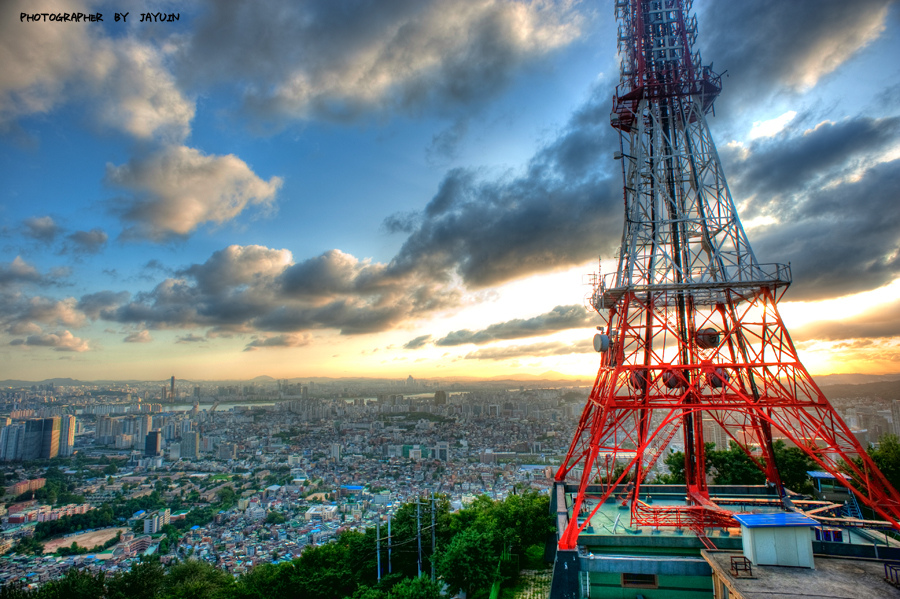The Peninsula
Selling Korea
Published January 9, 2012
Category: South Korea

By Ben Hancock
South Korea made an appearance in this past Sunday’s New York Times list of 45 must-visit travel destinations for a surprising reason — golf courses. No one could quibble with the fact that Korea has churned out more than its fair share of club-wielding pros (Pak Se-ri and K.J. Choi come quickly to mind). But is playing 18 holes in Songdo New City really the nation’s hottest selling point for 2012, the final year of its official “Visit Korea” campaign? Especially for U.S. readers, for whom a trip to the peninsula involves a long-haul flight of anywhere from nine to 13 hours, I can’t imagine that has much appeal.
Korea has long had trouble putting a finger on how to sell itself to Westerners — a fact that has been embodied by its frequent slogan changes (“Dynamic Korea,” “Korea Sparkling,” and the latest, “Korea: Be Inspired”). This fortunately doesn’t appear to have stopped a steady inflow of travelers from the West. My analysis of figures from the Korea Tourism Office shows that in the prime vacation months of July and August, Korea enjoyed year-on-year growth in 2010 of 2.84 percent in visitors from the United States who said their primary reason for visiting was tourism. That number increased in 2011 by 3.85 percent to 83,500 summer visitors from the U.S. The story is even brighter when one looks to Europe — growth from summer 2009 to 2010 of 13.44 percent, with notably weaker but still impressive growth in 2011 of 6.01 percent.
But we should ask whether it could do better. The “2010-2012 Visit Korea Year” — which is inexplicably three years long — doesn’t seem to have brought exceptional tourism growth from the West, for example. Looking at full years in terms of tourism-oriented trips (as opposed to business travel or official visits), the growth in visitors from the U.S. has been moderate: roughly 444,000 in 2009; 476,000 in 2010; and 451,000 between January and November of last year.
By comparison, the growth from China has been remarkable, though we should take into account some conflicting factors — it is of course much closer in proximity, but does not have a visa exemption agreement with Korea (which the U.S. has). China also obviously is much larger population-wise than the U.S. All that in mind, the numbers are still surprising. Tourists from China nearly doubled in 2010 to 1.01 million from 581,000. This figure appears on track for even more growth; in the first 11 months of last year, there were 1.2 million visitors from China.
The reasons other Asians visit Korea are different than those for Westerners. While visitors from China or Japan are likely to focus on shopping, an American may be more interested in doing a temple stay or seeing the DMZ. The boom in Kpop’s popularity Stateside may finally mean that the “Korean Wave” is now a common attraction in both Asia and the West. But for the large majority of Westerners, Korea has fallen down in distinguishing itself from its neighbors. And getting back to my original point, I think luxury golf is probably the wrong way to go.
Coming up with the right selling point for Korea is not an easy proposition. Korea has gorgeous and unique temples, striking mountains, and metropolises that become awash in neon at night. And so do China and Japan. It’s perhaps not surprising that many travelers from the West I have talked to tack visits to Korea onto longer journeys that also hit Tokyo or Hong Kong.
Korean food is something the tourism authorities have rightly latched onto, but I would argue that this is not enough to really bring travelers in droves. The “Peace & Life Zone (PLZ)”– a nature trail that takes its name from the adjacent DMZ — is another interesting idea as green tourism becomes increasingly popular. In order to really become a nation that even the uninitiated will want to visit, however, Korea needs to promote what is probably most difficult to wrap one’s hands around: its history and culture. It needs to be an idea. Instead of trying to contrive one aspect or another as the reason to visit Korea, tourism promoters should approach the task holistically.
There are many ways to do this. One idea would be to promote homestay or exchange experiences for high-school and college students in the U.S. Levying for more Korean language teachers in schools or private academies is yet another possibility that could increase cultural interchange. Helping to plan more Kpop concerts (like the one last fall) or working with publishers to translate potentially attractive Korean novels are still more ideas. Of course, these are not the end goals in and themselves, but instead are methods aimed at slowly raising the profile of Korea in the West — giving it gravity as a destination.
Ben Hancock is a journalist who has studied Korean language and culture since 2004, and who lived in Korea most recently from 2008 to 2010. His views are his own.
Photo from Jongho Won’s photostream on flickr Creative Commons.
